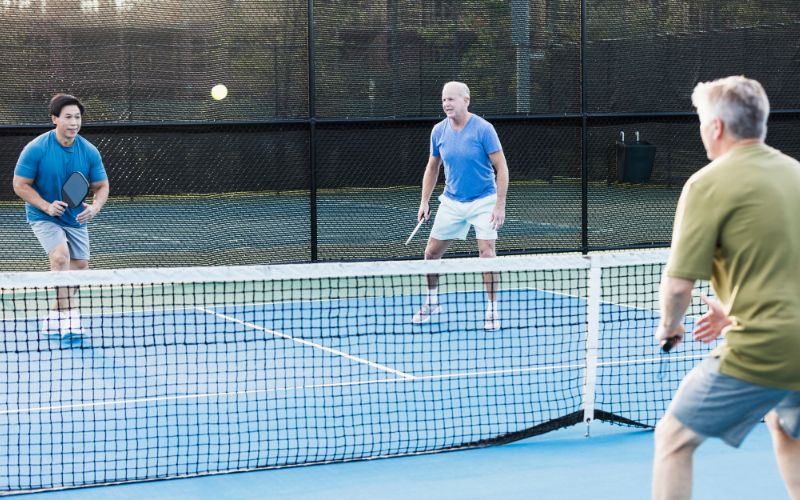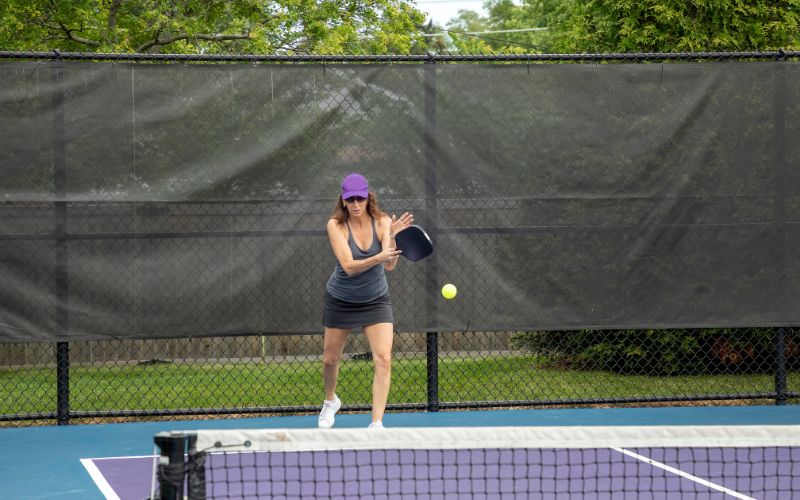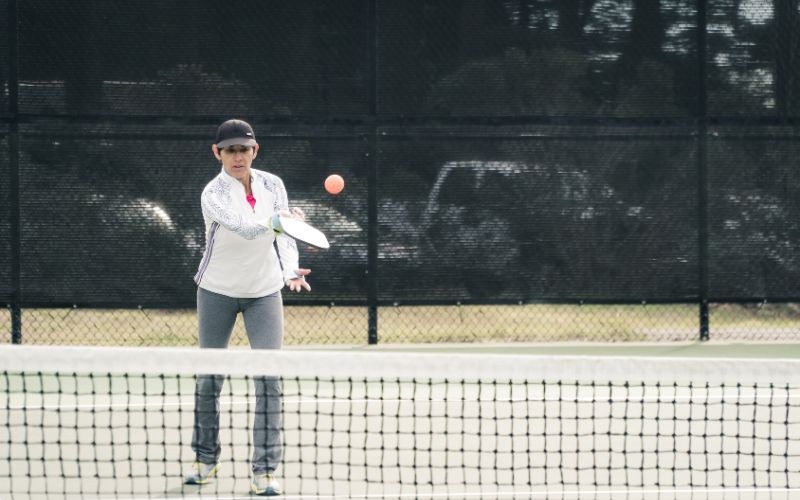In the fast-paced game of pickleball, mastering the return of serve can be the difference between gaining the upper hand or playing catch-up throughout the match. A well-executed return not only puts the serving team on their toes but also sets the returning team up for a favorable position to control the rally. Whether you’re a beginner or a seasoned player looking to refine your skills, here are 9 essential strategies to enhance your pickleball return of serve.
1. Master Your Ready Position: Establishing a Solid Stance
Before the serve deep even comes your way, ensure you’re in a ready position. This means being on the balls of your feet, knees slightly bent, and paddle held in front of you. A solid stance allows you to react quickly to the incoming serve and adjust your positioning as needed.
2. Focus on the Split Step: Timing is Key
As the serving team prepares to strike, perform a split step. This small hop helps you stay light on your feet and ready to move in any direction. Timing your split step with the server’s contact point gives you a split-second advantage in reacting to the serve.
3. Anticipate the Serve: Read Your Opponent
Pay close attention to your opponent’s body language and serving tendencies. Are they favoring a power serve down the middle or aiming for a deep serve to push you back? Anticipating their next move allows you to position yourself strategically and be prepared for various types of serves.
4. Position Yourself for Success: Finding the Transition Zone
As the serve comes over the net, position yourself in the transition zone. This area, located between the baseline and the non-volley zone (NVZ line), provides the best vantage point to attack the serve while maintaining control over the rally.
5. Stay Balanced for Precision: Maintain Control of Your Body
Avoid the temptation to overextend or lunge for the ball. Instead, focus on staying balanced and centered as you make contact with the ball. A controlled swing from a balanced position increases your chances of making a good return and keeps you ready for the next shot.
6. Add Spin for Variation: Enhance Your Shot Selection
Experiment with adding spin to your returns to keep your opponents guessing. A soft return with backspin can drop the ball short, forcing the serving team to move forward, while a topspin shot can drive the ball deep, putting pressure on the opponents to defend.
7. Target the Opponent’s Weakness: Play Smart, Not Hard
Instead of aiming for the sidelines or hitting directly at your opponent, target their vulnerabilities. Identify their weaker side or areas of the court where they struggle to defend, and capitalize on those opportunities to gain the upper hand in the rally.
8. Control the Pace of Play: Dictate the Tempo
Don’t let the serving team dictate the pace of the pickleball game. Take control of the rally by varying the speed and placement of your returns. Mix up short returns with deep shots to keep your opponent hits off balance and unable to settle into a rhythm.
9. Learn from Your Mistakes: Embrace the Learning Process
Every missed deep return or error is an opportunity to learn and grow as a pickleball player. Analyze your mistakes and make course corrections as needed. Consider recording your matches or practicing with a partner to identify areas for improvement and refine your pickleball return technique.
Where Should You Stand When Returning a Serve in Pickleball?
Your pre-serve positioning is crucial for success. Which stance offers the greatest chance of executing a successful return shot? For most players, positioning for a forehand return presents the best opportunity to execute the desired shot. Those transitioning from sports like tennis often prioritize indicating readiness for either a forehand or backhand shot.
This readiness is crucial as serves in pickleball are delivered swiftly, demanding quick reactions. In pickleball, it’s often feasible to cover the entire service box, even from a slightly tucked position on one side. In such cases, the ideal positioning involves shading towards the side that enables the desired shot.
Assuming a preference for a forehand return, positioning oneself to execute a forehand shot approximately 95% of the time is advisable. However, it’s essential to be prepared to swiftly adjust if the opponent delivers a perfect serve to the open area of the service box. Being prepared for this serve location ensures the ability to execute the desired shot in the vast majority of instances.
Conclusion
In the dynamic world of pickleball, the return of serve is one of the most crucial aspects of the game. By mastering the fundamental strategies outlined above and continuously honing your skills through practice and observation, you can elevate your performance on the pickleball court and gain a competitive edge against your opponents. Remember, success in pickleball is not just about hitting the ball—it’s about controlling the pace, anticipating your opponent’s moves, and making calculated decisions to secure the point. With dedication and perseverance, you can become a formidable force in the world of pickleball.
FAQs for Improving Your Pickleball Return of Serve
1. Where should I position myself when returning a serve in pickleball?
Your pre-serve positioning is critical. Aim to position yourself to anticipate the serve and execute your desired shot. Typically, for most players, positioning for a forehand return offers the best opportunity to execute the desired shot.
2. Why is the split step important when returning a serve?
Performing a split step as the serving team prepares to strike is crucial. This small hop helps you stay light on your feet and ready to move in any direction, giving you a split-second advantage in reacting to the serve.
3. How can I anticipate the serve in pickleball?
To anticipate the serve, pay close attention to your opponent’s body language and serving tendencies. Anticipating their next move allows you to position yourself strategically and be prepared for various types of serves.
4. What is the transition zone, and why is it important?
The transition zone, located between the baseline and the non-volley zone (NVZ line), provides the best vantage point to attack the serve while maintaining control over the rally. Positioning yourself in this area sets you up for success in returning the serve effectively.
5. How can I improve my shot selection when returning a serve?
Experiment with adding spin to your returns to keep your opponents guessing. Varying your shot selection with different spins and placements can make it challenging for your opponents to predict your next move, giving you an advantage in controlling the rally.






